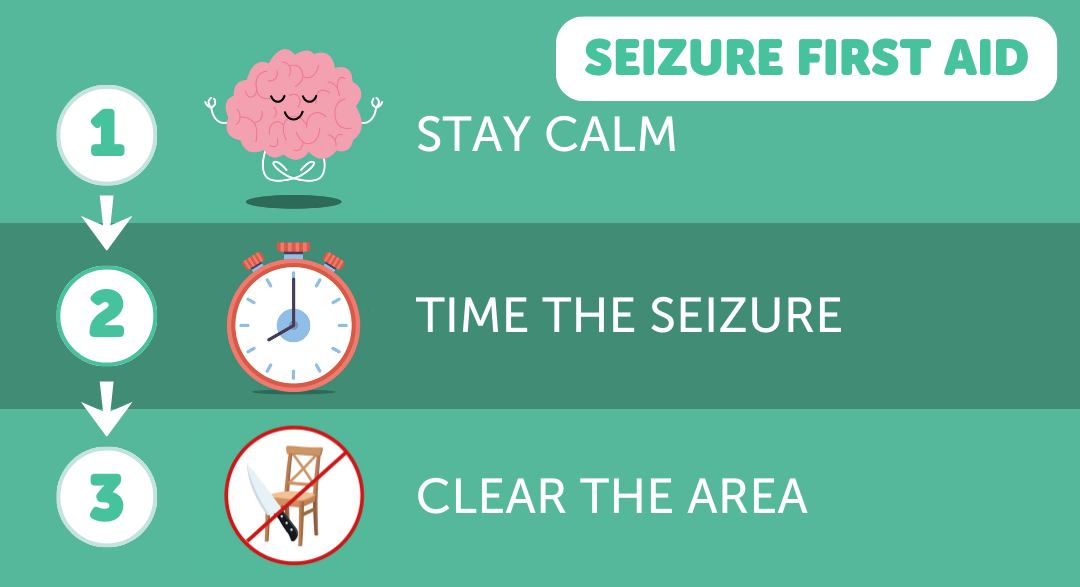How to help someone that’s having a seizure
20 September 2023

Knowing what to do when someone has a seizure can help you feel prepared and less likely to panic when you see one. In this blog, find out what you can do if you see someone having a seizure. This information on different seizure types and how you can keep someone safe if they’re experiencing these is taken from Epilepsy Action’s website.
Tonic-clonic seizures
Tonic-clonic seizures are the type of seizure most people recognise. Someone having a tonic-clonic seizure goes stiff, loses consciousness, falls to the floor and begins to jerk or convulse.
How can you help?
• Protect them from injury (remove harmful objects from nearby)
• Cushion their head
• Time how long the seizure lasts
• Aid breathing by gently placing them in the recovery position once the jerking has stopped
• Stay with the them until they are fully recovered
• Be calmly reassuring
Focal seizures
Someone having a focal seizure, may not be aware of their surroundings or what they are doing. They may have unusual movements and behaviour such as plucking at their clothes, smacking their lips, swallowing repeatedly or wandering around.
How can you help?
• Guide them away from danger (such as roads or open water)
• Stay with them until recovery is complete
• Be calmly reassuring
• Explain anything that they may have missed
Absence seizure
Someone having an absence seizure is unconscious for a few seconds. They will stop doing whatever they were doing before it started, but will not fall. They might blink, have slight jerking movements of their body or limbs. They don’t know what is happening around them and they can’t be brought out of it.
How can you help?
• Gently guide the person away from any dangers (especially if they are having repeated absences)
• Stay with them until recovery is complete
• Be calmly reassuring
• Explain anything they may have missed
Call for an ambulance if any of these things apply:
• You know it is their first seizure
• The seizure lasts for more than 5 minutes
• They have one tonic-clonic seizure after another without regaining consciousness between seizures
• They are seriously injured during the seizure
• They have trouble breathing after the seizure has stopped
